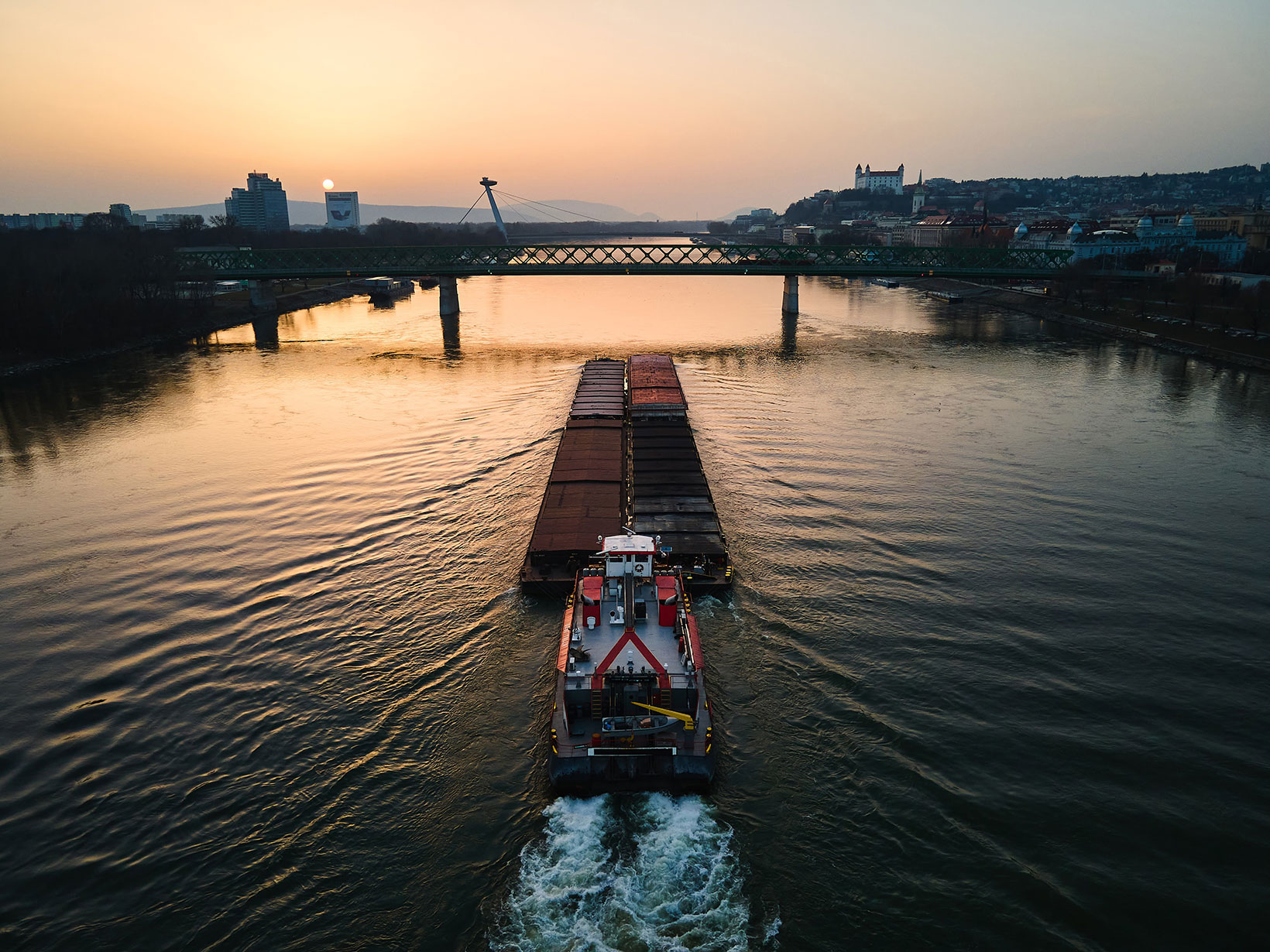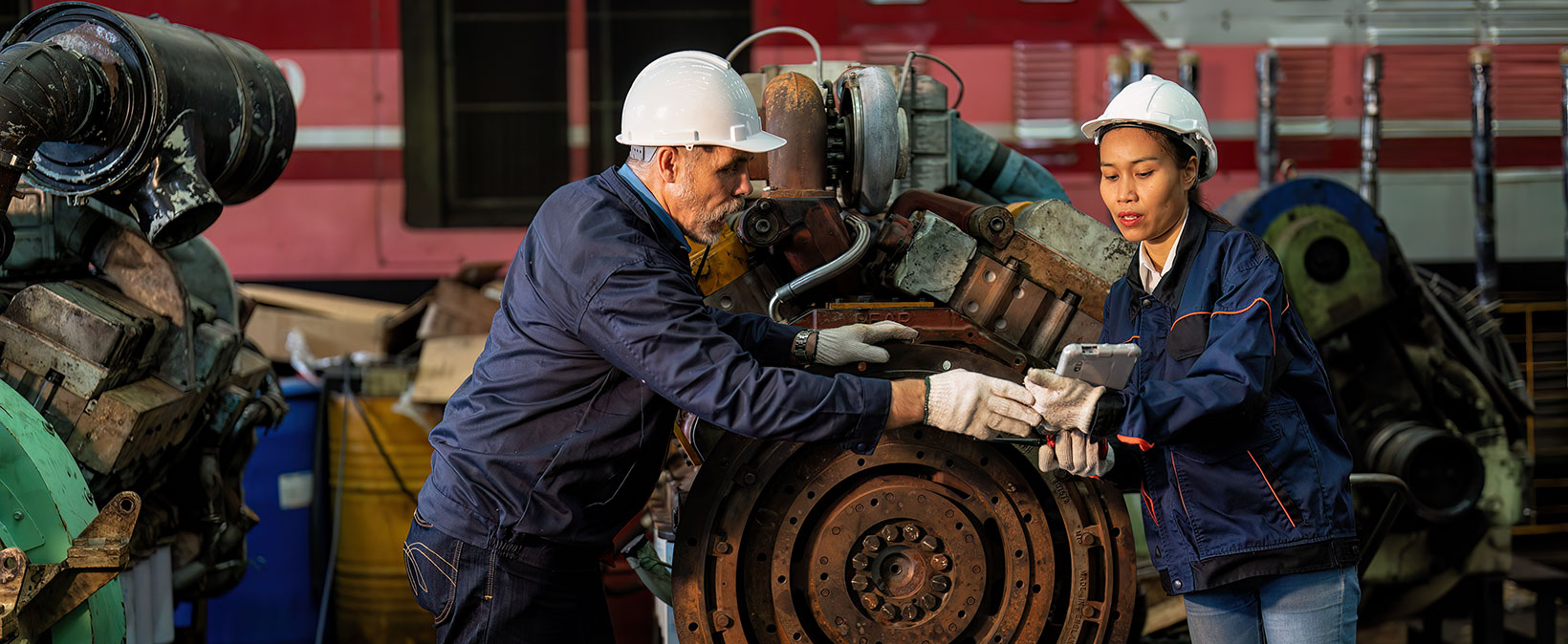
A new barge with covers can cost around a million dollars and the tugs that pull them can cost far more, depending on the specifications. Since barges and tugs are the primary investments for any barge operation company, having a full understanding of how to extend their useful lifespan is imperative in order to get the most out of the investment. Fortunately, there are several ways to extend the lifespan of an inland marine boat and plenty of data that can give insight about what to expect from an average fleet.
The Average Useful Life of an Inland Barge
The two main types of barges that make up most of the commercial cargo transport industry are dry hopper barges and liquid tank barges. Reports indicate slightly different average lifespans for the two. According to a report by the Ingram Barge Company, the average lifespan for dry hopper barges is 20-30 years, which is similar to the USDA estimate of 25-30 years for this type of barge. The average lifespan for the liquid tank barges is 20-40 years according to Ingram, with the larger span mostly due to the larger variation of different types of liquid tank barges. Most barges in operation as of 2023 were on the slightly older side, with their average ages lying somewhere between 17 and 21 years, according to The Waterways Journal Weekly.
Ingram also reports that the varying types of tugboats have average lifespans of 30-35 years. However, these vessels are often rehabilitated around mid-life to extend their expected lifespan by another 15 years, putting their total lifespans in the 45-50 year range.
Of course, how long an individual barge or tug actually lasts depends on a number of factors. For example, some liquid tank barges carry more corrosive chemicals, causing more wear and tear than other liquids and reducing the useful life of the barge. Major accidents or breakaways can also cut a barge’s life short.
On the other hand, a barge’s lifespan can be maximized through proper care and preventative maintenance, as well as planning ahead to mitigate the possibility of accidents.

Ensuring Maximum Lifespan Through Proper Maintenance
Regular and preventative maintenance of transport barges is key to ensuring a fleet lives up to its potential. Maintenance activity should be routine and include a wide range of inspections, cleaning, and repairs. These should include:
Frequent Checks for Damage
Between the damage caused by constantly moving through water, carrying corrosive cargo, regular docking, and collisions with debris, barges are susceptible to a lot of wear and tear. For this reason, it is important to do frequent checks for damage. Quick checks for leaks and equipment function should occur daily, while more thorough inspections might occur monthly. These inspections can reduce the likelihood that small problems will turn into catastrophes.
Regular Cleaning
Regular barge use can result in deposits on the hull that can lead to corrosion or pitting. Prompt removal of these deposits can help to lengthen the useful life of the barge. Making sure that electrical and mechanical systems are free of dust and debris can also help to keep them functional for longer.
Maintenance Logs
Because the maintenance of a transport barge is so important, records need to be kept indicating what has been done and when it was done. This helps keep everyone on the same page and provides a way to check which tasks might be overdue. Maintenance logs are easy to keep with the right software, like BargeOps.
Protective Coatings
Protective coatings and paints are applied to inland marine boats to prevent corrosive damage. When these coatings are damaged or begin to chip off, water can begin to corrode the underlying metal. It is important to check the integrity of these coatings regularly and apply new coatings when needed.
Regulation Compliance
Compliance with regulatory standards and environmental protection measures is mandatory in order to ensure that the barge industry keeps in line with goals for a sustainable future, but these regulations also help to keep barges well maintained.
For example, Vessel General Permit (VGP) issued by the Environmental Protection Agency (EPA) requires three kinds of inspections: Routine visual inspections, comprehensive annual inspections, and drydock inspections. Compliance with the required cleaning of cargo residue and inspection of various systems can help barge operators keep their barges functional and check for other problems, all while ensuring that the standards are appropriately met.

Keeping Accidents at Bay
Barge accidents and breakaways can result in severe injuries, costly damages, and even environmental disasters. As with any vehicle, accident prevention precautions must be taken seriously in order to protect human lives, surrounding infrastructure, cargo, and the barges themselves. While it is nearly impossible to ensure that accidents never happen, there are several ways to minimize the risks and reduce the frequency of breakways and collisions, thereby extending the lifespan of inland barges.
Continuous Crew Training
Even the most reliable barge workers are susceptible to human error, which can lead to navigational mistakes, inadequate equipment management or storage, and failure to comply with safety protocols. These mistakes might start out small, but can have major consequences under the right conditions. Proper and ongoing training can mitigate the likelihood of such mistakes by reminding the crew what is at stake and keeping safety protocols fresh in their minds. Accidents can be prevented with the implementation of regular safety drills to give crew members the experience needed to respond to emergencies quickly and effectively.
Rigorous Safety Protocols
Safety protocols should be well documented and available for crew members at all times. These should include clear instructions on what to do in emergency situations, as well as guidelines for ensuring stability of equipment, using proper anchoring systems, and regularly inspecting equipment. Proper maintenance also goes hand in hand with safety protocols, as well maintained and regularly inspected equipment generally equates to a safer environment.
Tracking Environmental Hazards
Harsh weather and other environmental hazards, like strong currents and poor visibility due to fog, can pose a risk for tugs and barges, making them more difficult to operate and navigate. In particular, high winds, heavy rains, and rapid changes in water levels can lead to the instability of a barge and cause a breakaway.
In order to stay ahead of these risks, barge companies can implement various tools to track conditions and facilitate navigation. For example, GPS navigation, collision avoidance systems, and weather tracking tools can help barge operators navigate more effectively under poor conditions. Communication between other barges and ports is also key in preventing collisions in difficult conditions.
Accidents can be prevented with the implementation of regular safety drills to give crew members the experience needed to respond to emergencies quickly and effectively.

Utilizing Technology to Extend the
Useful Life of Inland Barges
Whether a barge company is trying to extend the life of an older fleet or ensure a long life for a new fleet, there are new technologies that can help a crew do everything from tracking maintenance activity to giving up-to-the-minute updates on river conditions. Any operation can be made more efficient and ultimately safer by implementing these technologies.
With the use of big data, AI, and automation, barge companies can:
- Minimize human error by automating certain tasks and calculations.
- Enable automatic and seamless exchange of information, like barge movements, between shore-based dispatch and boats to avoid collision incidents.
- Streamline regulation compliance and maintenance procedures by automatically filling out known information into logs and prompting crew members to complete the process.
These are just some of the ways new technologies are working to improve barge operations across the board. Contact us today to set up a demo and see how BargeOps software can help reduce accidents and streamline the maintenance of transport barges to ultimately extend the useful life of inland marine boats.


